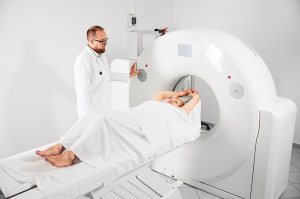por
John R. Fischer, Senior Reporter | March 31, 2023

Women with co-pays and deductibles are less likely to undergo supplemental breast imaging due to associated high out-of-pocket costs.
In cases where mammograms return abnormal results, women over 40 may be less likely to undergo follow-up imaging if their insurance plan has higher out-of-pocket costs.
According to a new Neiman Health Policy Institute study, women with deductibles and co-pays pay more out-of-pocket than those with co-insurance plans.
Among 230,845 women covered by 22,828 distinct commercial and Medicare Advantage insurance plans, deductibles and copays were $1,186 and $1,020, respectively, and resulted in fewer breast imaging procedures. Co-insurance plans had the lowest costs, at $945, with those patients more likely to get follow-up imaging.
“While eliminating cost sharing for breast cancer screening was an important step in health policy, if women who have an abnormal mammogram don’t follow through with diagnostic tests due to cost, then the policy hasn’t gone far enough to support early cancer detection and improve outcomes equitably,” said senior author Dr. Geraldine McGinty, of Weill Cornell Medicine, in a statement.
Researchers evaluated 45 million medical claims over three years, finding that 24 fewer patients per 1,000 women underwent exams due to high co-pays and 16 fewer with high deductibles.
They also assessed the cost of diagnostic mammograms, ultrasound, MR and biopsy. Because of Affordable Care Act protections, out-of-pocket costs in most cases for mammography have been eliminated for women in this age group. But follow-up breast MR exams were less likely to be covered in all higher cost-sharing insurance plans, resulting in fewer exams. In contrast, breast biopsy was the most likely to be covered.
The researchers say that variations in out-of-pocket costs offered by different insurance plans may be a direct reason for why a patient's health outcomes are less than optimal, and why individuals have to dip into alternative financial sources that could otherwise go toward food, rent and other expenses.
“Additional policy changes such as removing cost-sharing for subsequent tests after abnormal screening results or bundling all breast cancer diagnostic testing with screening mammograms into a single payment may provide avenues to mitigate these financial barriers to care and improve breast cancer outcomes," said author Danny Hughes, of Arizona State University, in a statement.
The findings were published in
JAMA Network Open.
